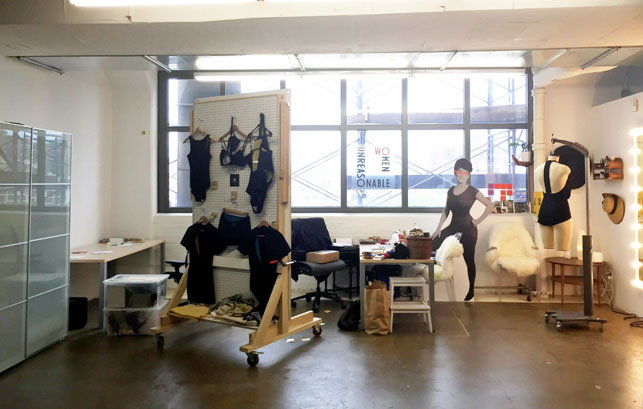Sarah Krasley ponders the notion of authenticity in product design, particularly generative design and artificial intelligence
“Hard times arouse an instinctive desire for authenticity” — Coco Chanel

The Unreasonable Women offices in New York where Sarah Krasley is trying a little authenticity herself with a new swimwear range
For better or worse, there is a collective cry for authenticity in the air. It’s manifesting in either side of the political aisle in the United States as Republicans demand answers about Hillary’s emails and Democrats stage sit-ins to expose the special interests that allow the lack of gun control legislation to perpetuate amidst monthly mass shootings.
In milder ways, we’ve become proud of the food we grow ourselves or buy directly from farmers. We take greater care to know about the products we buy and people who make them. On the flip side, we have insatiable needs to peek into the lives of celebrities and to watch their every move in high definition television: another side of “getting real”.
In many of the things I read on marketing strategy for start-ups, there is consensus that buyers care as much about a physical product as they do about its story. I’ve been focusing on authenticity as I launched a swimwear line this spring and had to make decisions about how much or little to retouch the photographs of the model wearing my swimsuits.
To try and do the right thing, I did some research into retouching and interviewed folks on either side of Adobe’s magic wand. As I boiled those conversations up to high level insights, it seemed like most people didn’t want to look like they were made of plastic, but a little brightening and smoothing here or there wasn’t such a bad thing. A Whole Foods approach to retouching, if you will. Dark chocolate covered almonds with sea salt in lieu of Skittles.
There are no guidelines for ethics in retouching and, drawing inspiration from Valerie Casey’s Designers Accord, my collaborator, Leah Hunter, and I launched an effort called The Retouchers Accord the other week in the hopes that it could begin to defi ne authenticity in an industry that contributes a lot to negative body image in children as young as five.
“Be truthful, Nature only sides with truth” — Adolf Loos
To start an endeavour like this, I do a ton of research. This inevitably leads to how a concept manifests in other fi elds. In the world of product design, authenticity lies in many places, but recently in generative design and artificial intelligence (AI).
A generative design tool can, for example, be given a number of design parameters and can spit out a set of optimal designs based on them. IBM Watson can consume written information coupled with data from Internet of Things enabled sensors and actuators to derive complex, multiparameter decisions much faster and with much greater precision than a human brain ever could.
“Nobody wants another mirror on their fears” — Sebadoh
Another way truth and authenticity touches product design and manufacturing is through simulation: experiencing real world factors before a product is real. This is visualisation of how a product will look in certain lighting, or predictions on how a part will perform via finite element analysis, or even evaluating how air will move through a space with a particular HVAC configuration.
As long as good data goes into a simulation, there is a good chance that precise results will come out. The problem is: the person on the receiving end of a simulation or the outcomes of a generative design exercise might not want to see them. This is why so many consulting projects get buried under the adage of “we decided to go a different direction.”
“It’s hard to beat a person algorithm that never gives up” — Babe Ruth
At time of publication, machines are not making decisions, people still are. Sometimes unlimited-computing-power brand truth shines a light on a the need for a giant capital investment or yields results that look like an alien designed it, even if those outcomes are more efficient and cost effective in the long run.
IBM Watson, might, for example arrive at conclusions that mean people lose their jobs for the sake of efficiency and the bottom line. Does that mean we should put our heads in the sand and hope that computing doesn’t further infringe on our turf as product designers and engineers? No. But it does mean that we need to get smarter and enrich our own skillsets as the machines that help us get smarter.
Someday UX designers will focus more on how humans eavesdrop on collaborating sensors and machines and less on dropdown menus for human intervention. But the UX designers who embraced this early will be the ones who get to solve those fascinating design problems.
Learning how to wield AI and generative design algorithms for example, is a much better strategy than being frightened of them.
“If you can’t beat ‘em, join them” — Unknown
Aim for a little authenticity in your designs
Default






